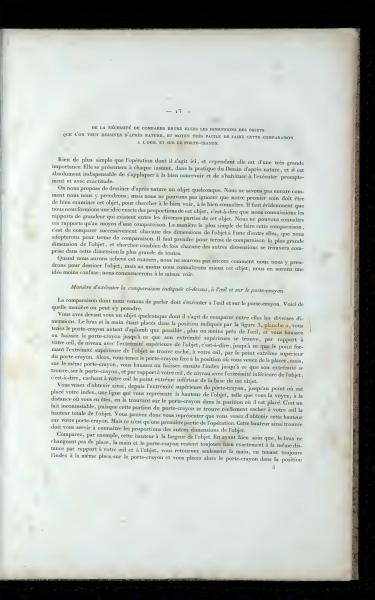On the Necessity of Comparing the Dimensions of Objects You Want to Draw from Life, and a Very Easy Way of Making This Comparison by Eye and Using a Pencil Holder.
The process described here is very simple yet of great importance. It will be relevant every moment while practicing drawing from nature, and it is absolutely essential to learn how to do it quickly and accurately.
We are asked to draw any object from life. We may not yet know how to proceed, but it is essential to start by examining the object properly to understand it well. This requires having a clear idea of the object's proportions, meaning understanding the size relationships between its different parts. We can only understand these relationships by comparison. The simplest way to make comparisons is to compare each dimension of the object to a chosen unit of comparison, ideally the largest dimension of the object, to see how many times each of the other dimensions fits into it.
Once we complete this examination, we may still not know exactly how to draw the object, but we will at least understand it better and have a clearer picture.
Method to Perform the Comparison Described Above, by Eye and Using a Pencil Holder.
The comparison we discussed should be done by eye and using a pencil holder. Here is how to do it:
You have an object in front of you whose dimensions you want to compare. With your arm and hand positioned as indicated by the figure 3, plate 4, lower the pencil holder as much as possible, close to your eye, and then raise or lower it until its upper end aligns, level with your eye, with the top end of the object. This means aligning the top point of the object with the upper end of the pencil holder. Then, keeping the holder fixed, raise or lower your index finger on the holder until it aligns level with the bottom end of the object, thus masking the entire height of the object from your view.
This way, from the top end of the pencil holder to where your index finger is placed, you obtain a line representing the object's height as seen from your distance. This portion of the pencil holder truly hides the entire height of the object from your eye. However, this is just the first part of the operation. You must use this height to determine the proportions of the other dimensions.
For example, compare this height to the object's width. Take care to keep your arm steady so the hand and pencil holder maintain the exact same distance from your eye and the object. Then simply rotate your hand, keeping your index finger in place on the pencil holder, and position it as in figure 4.
The text explains the significance of comparing the dimensions of objects when drawing from life. It describes a simple method to perform these comparisons using a pencil holder to measure and align the dimensions, such as height and width, visually. This method aids in understanding the proportions of an object better, necessary for accurate drawing.
